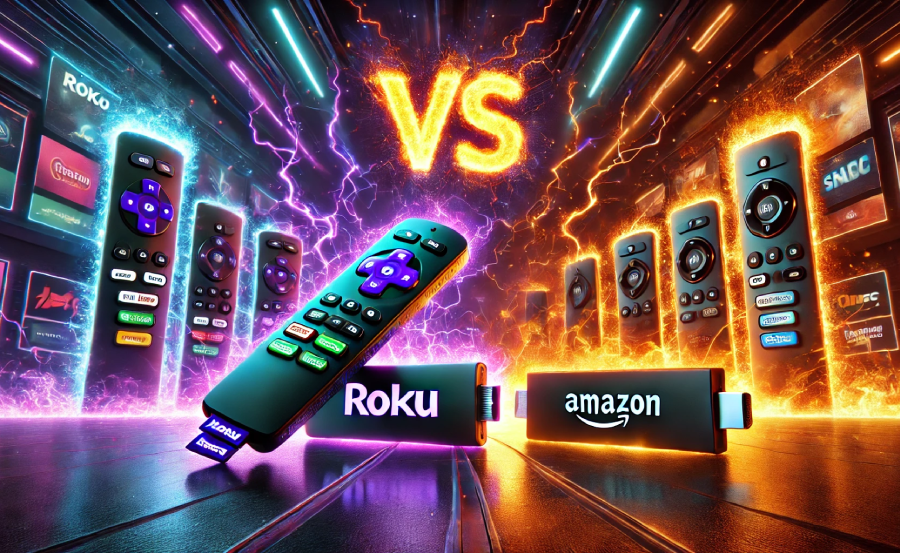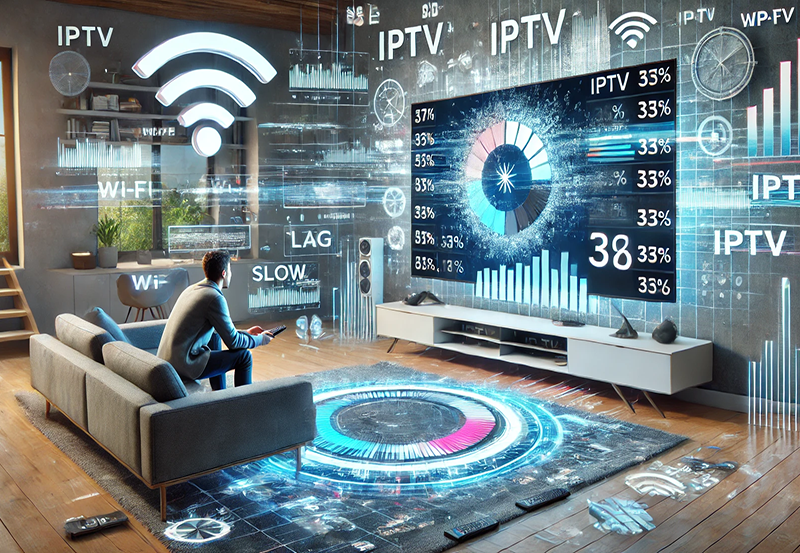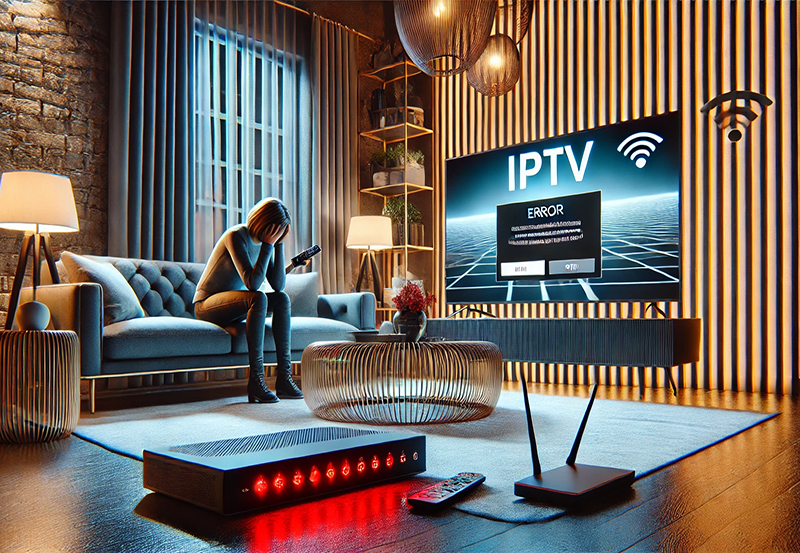In recent years, streaming devices have become a staple in households around the world, making cable TV almost a relic of the past. With a plethora of options available, Roku and Amazon Fire Stick stand out as two of the most popular choices. As energy efficiency becomes more of a focus, it’s essential to understand how these devices impact your electricity bill.
As cord-cutting takes center stage, more consumers are looking for robust alternatives to traditional television. Here, we delve into the nuances of energy consumption between Roku and Amazon Fire Stick, providing insights that can help you make an informed decision. Additionally, we introduce Beast IPTV, an IPTV service that is revolutionizing the way people experience streaming content.
Understanding Energy Consumption in Streaming Devices
What is Energy Consumption?
Every electronic device consumes some amount of energy when in use, and streaming devices are no different. By understanding how these gadgets utilize power, you can manage your energy costs more effectively. On average, streaming devices like Roku and Amazon Fire Stick use a small amount of power compared to other home electronics.
Pro Tip:
Discover the ultimate entertainment solution with 7 Days FalconTV Subscription designed just for you.
But why does it matter? Even minimal energy usage can add up over time, especially when multiple devices are in play. That’s why looking into their energy profiles makes sense for environmentally conscious users and budget savers alike.
Measuring Energy Usage
To evaluate the energy consumption of Roku and Amazon Fire Stick, we must know how to measure it accurately. Energy usage is typically quantified in watts. While this may sound technical, you don’t have to be an engineer to grasp the basics.
Here’s a simple rundown:
- Look at the wattage rating of the device.
- Understand the power state: on, standby, or off.
- Factor in usage time to estimate total energy consumption.
Influencing Factors
Several factors can influence the energy consumption of your streaming device. These include the resolution of the content being streamed, device settings, and network strength. Streaming in ultra-high definition, for instance, typically requires more power than standard definition.
The options you choose within the device settings, like screen savers and voice controls, can also contribute to increased power utilization. It’s important to balance performance with efficiency.
Roku: A Look at Its Energy Profile
Overview of Roku’s Technology
Roku has carved out a significant niche by offering a wide array of models tailored to different user needs. Known for its simplicity and variety, Roku provides a user experience that’s hard to beat. But how does it measure up in terms of energy efficiency?
Roku devices are designed with energy conservation in mind, often utilizing less power in standby mode. This makes them an attractive option for those keen on reducing energy consumption without compromising on utility and variety.
Roku’s Energy Efficiency
Most Roku models consume between 2 to 3 watts when streaming. When in standby mode, the energy usage significantly drops, making it one of the more energy-efficient devices around. This efficiency stems from their simplistic, no-nonsense design and focus on core functionalities.
Roku players have the advantage of lower operating costs in the long term, due to their minimal energy needs. Opting for a Roku device can be a wise choice for cost-conscious consumers who are also environmentally aware.
User Experience and Connectivity
Roku offers a user-friendly interface that’s accessible even to those who aren’t tech-savvy. The connectivity options are diverse, including dual-band wireless, which ensures reliable performance while potentially conserving energy by avoiding unnecessary signal interference.
Less obvious but equally important, its ability to integrate easily with other streaming services, including Beast IPTV, makes it a versatile accessory in any living room.
Amazon Fire Stick: Energy Considerations
Overview of Amazon Fire Stick’s Technology
Amazon’s Fire Stick lineup is renowned for its advanced voice control features and robust app ecosystem. With multiple iterations under its belt, Amazon continues to innovate. However, with advanced tech comes the question of how it impacts energy usage.
Amazon Fire Stick devices pack a punch in functionality but are often presumed to consume more power due to their enhanced features, including Alexa voice assistant capabilities.
Amazon Fire Stick’s Energy Efficiency
On average, Amazon Fire Stick tends to use around 3 to 6 watts while streaming, which is slightly higher compared to Roku. Their standby power consumption also tends to be marginally higher due to its background processes running various services.
For power users who prioritize advanced functionalities and yet want to manage cost, Fire Stick’s energy profile might not be the primary concern, but it’s certainly a factor to consider.
User Experience and Features
From the get-go, the Fire Stick provides a sleek experience packed with features such as voice commands and seamless integration with other Amazon services. This seamless integration can increase energy usage slightly due to requiring constant communication and updates.
Despite the more rigorous energy demand, the Amazon Fire Stick has a lot to offer those invested in the Amazon ecosystem, including smoother access to platforms like Beast IPTV through its extensive app library.
Beast IPTV: The Game Changer in Streaming
Why Choose Beast IPTV?
In the world of streaming, having reliable, high-quality content is crucial. Enter Beast IPTV, which is establishing itself as the top-rated IPTV service, offering more channels and options than traditional TV or competing IPTV services.
With a service like Beast IPTV, you don’t just watch; you explore a universe of content that is always at your fingertips. Whether it’s live sports, blockbuster movies, or international channels, Beast IPTV elevates your streaming experience beyond limitations.
The Benefits of Beast IPTV
- Thousands of channels from around the world
- High-definition resolution options at no extra cost
- Compatibility with various streaming devices including Roku and Amazon Fire Stick
- Cost-effective plans that offer incredible value
These features come together to provide a streaming solution that is not only powerful but also adaptable, meeting the needs of every consumer who demands versatility without sacrificing quality or usability.
Integration with Streaming Devices
Beast IPTV is designed to integrate seamlessly with both Roku and Amazon Fire Stick. By subscribing to Beast IPTV, users gain access to an extensive library of content, which complements the features offered by these devices.
Moreover, the energy-efficient setup of Beast IPTV means users can enjoy an enhanced streaming service without worrying about soaring energy costs. Its flexibility and user-friendly setup make it the ideal option for those seeking a superior viewing experience.
Comparative Analysis
Energy Efficiency: Roku vs. Amazon Fire Stick
When looking purely at energy consumption, Roku emerges as a slightly more energy-efficient choice, with lower wattage usage in both active and standby modes. For users prioritizing minimal energy expenditure, this may sway their decision.
However, the difference isn’t drastic, and both devices provide a feasible solution for energy-conscious consumers.
User Experience: The Verdict
Choosing between Roku and Amazon Fire Stick often comes down to personal preference and specific needs. Roku offers uncomplicated, reliable streaming with broad compatibility, whereas Amazon Fire Stick provides a more feature-packed experience, particularly beneficial for users integrated into the Amazon ecosystem.
Ultimately, the balance between functionality, cost, and energy efficiency will guide the optimal choice for each individual.
The Broader Impact of Streaming Devices and IPTV
Energy Consumption Trends
As more households worldwide adopt streaming devices, understanding the energy impact of these technologies becomes increasingly important. Even when each device uses relatively small amounts of power, the cumulative effect can be substantial.
Adopting efficient devices, alongside green energy practices, can collectively reduce this footprint, benefiting the environment and reducing utility expenses.
The Future of Streaming and IPTV
Streaming technology continues to evolve, with IPTV services like Beast IPTV leading the charge in delivering content-rich solutions without hefty energy demands. As consumers become more aware of energy consumption, the integration of low-power technology with high-quality streaming solutions represents the next frontier.
Beast IPTV’s adaptability and comprehensive offering ensure it remains at the forefront, providing exemplary service that caters to modern consumers’ needs.
Wrapping Up: Making the Right Choice
While energy consumption might not be the sole deciding factor for everyone, it’s an influential aspect when choosing between Roku and Amazon Fire Stick. Each device offers unique qualities and features that cater to different audiences, yet both provide excellent platforms for streaming. By considering energy efficiency alongside other vital factors, users can select the device that suits their lifestyle more aptly.
Complementing these choices with an unparalleled IPTV service like Beast IPTV can transform the way users enjoy entertainment, leading them into a new era of streaming possibilities.
FAQ Section

What is the energy usage of Roku devices?
Roku devices typically consume between 2 to 3 watts while streaming and less in standby mode, making them highly energy-efficient.
How does the Amazon Fire Stick’s energy consumption compare to Roku’s?
The Amazon Fire Stick uses slightly more energy, ranging from 3 to 6 watts while streaming. Its standby mode also consumes marginally more power due to additional features.
Is Beast IPTV compatible with both Roku and Amazon Fire Stick?
Yes, Beast IPTV seamlessly integrates with both streaming devices, offering a wide array of content accessible through the respective app libraries.
Why is Beast IPTV considered the top-rated IPTV service?
Beast IPTV is popular due to its extensive channel lineup, high-quality streaming, and cost-effective plans. It provides unparalleled service compared to traditional cable and other IPTV options.
Can opting for Beast IPTV help reduce overall energy usage?
While IPTV itself doesn’t significantly impact energy consumption, using it with efficient devices like Roku can contribute to overall lower energy usage for your streaming needs.
How can I minimize energy consumption with streaming devices?
You can reduce energy use by choosing streaming devices with lower wattage, selecting energy-efficient settings, and ensuring devices are on standby when not in use.
What role does IPTV play in home entertainment?
IPTV services like Beast IPTV expand entertainment options significantly, offering diverse content from around the globe while contributing minimal additional energy usage beyond the chosen streaming device.
Lazy IPTV Compatibility with Smart TVs: Everything You Need to Know




